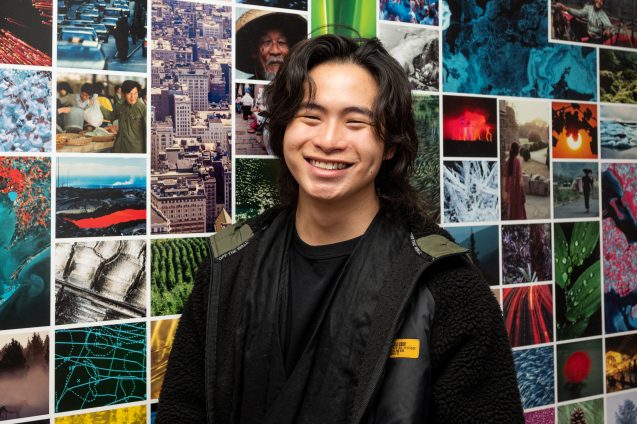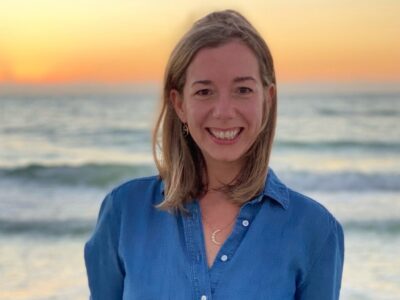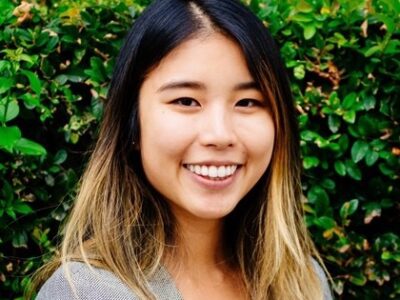
Reuben Goh grew up in Singapore, where he spent most of his time outdoors. His passion for sustainability and climate science originated from a profound connection with the natural world, particularly through his fondness for fishing.
As an aspiring environmental educator, Goh was drawn to the Master of Science in Sustainability Science program (SUSCI) for its strong links to the Lamont-Doherty Earth Observatory (LDEO) and its research faculty. The opportunity to learn from professors at the cutting edge of climate science gave Goh firsthand insight into the evolving sustainability space. He hopes to take the experience gained from the program and work toward instilling a passion for the environment in his future students, as described in the Q&A below.
What were you doing before you started the program? What made you decide to apply?
Before coming to Columbia, I completed my undergraduate degree in geography at the University of Cambridge. Over those three years, I spent a lot of time engaging with academic discourse that was planted firmly in the world of the social sciences. On a broader level, I had my sights set on becoming an educator and felt like I did not have enough time during undergrad to explore the earth-science element of the academic field. Columbia’s SUSCI program felt like the right fit for me because it is scientific in nature but framed by sustainability. I thought the program would give me insight into what was happening at the forefront of the field, and I was not disappointed!
What are some of your favorite memories from your time as a student?
I think back fondly on my time in the program—everything from the SUSCI cohort regularly meeting up after Thursday evening classes, to testing lead levels in soil with Lex van Geen, to early evening sunsets forming the backdrop of lively discussions in Bob Newton’s class, or even learning how to core trees with Brendan Buckley in the forest next to LDEO.
What project are you especially proud of?
My capstone project comes to mind. I spent a lot of time with my capstone group working through a risk-assessment report for the Buchanan-Verplanck Elementary School after the decommissioning of the Indian Point Energy Center. This work culminated in a presentation on our monitoring suggestions at the Cortlandt Town Hall to the key stakeholders of the community. It was an intimidating project, but I am glad to have been able to see it through with the rest of the capstone team and our faculty advisor, Jonathan Hollander.
What has been your biggest takeaway from the program?
I came from a background where climate science and academia were not foreign concepts, but this program offered me the opportunity to work closely with like-minded students as well as world-class faculty. The strength of the program undoubtedly lies in its ties to LDEO, and I was thrilled to have had the opportunity to work in the Tree Ring Lab with Brendan Buckley, processing tree cores for blue-light intensity analysis. For me, the access to hands-on experience is hard to match, and the time I spent working with researchers and the relationships that came out of that are what I cherish the most.
What are you doing now that you’ve graduated?
I am currently pursuing a postgraduate diploma in education at the National Institute of Education at Nanyang Technological University in Singapore and studying to be a teacher. Often, I think back to the content and concepts from the SUSCI program when considering how I can best convey information to my future students. The geography curriculum in Singapore’s education system has shifted to focus on sustainability, and I continue to find not only relevant case studies and examples from the SUSCI curriculum, but also how the program contributed to the development of my analytical and critical lens. In thinking through how to create authentic learning experiences, field research comes to the forefront—the prospect of one day offering students the chance to engage in the same research experiences I had seems more attainable than ever before. None of this would be possible without the SUSCI program.
Do you have any advice for current or prospective students?
The wonderful thing about the program is how broad and flexible it is, allowing you to tailor it to your interests! The faculty want to help you reach your goals. If you’d like to focus more on climate modeling, you can narrow your classes to that. If your interest lies in a medley of science and policy, there is bandwidth for you to dabble in both. Drop a message to alumni and get their perspectives; many of us were in the same program but have a diversity of experiences. You get what you give with the program, and it has plenty to offer. There’s nothing quite like it!
The Master of Science in Sustainability Science program is offered by the School of Professional Studies in partnership with the Columbia Climate School.



